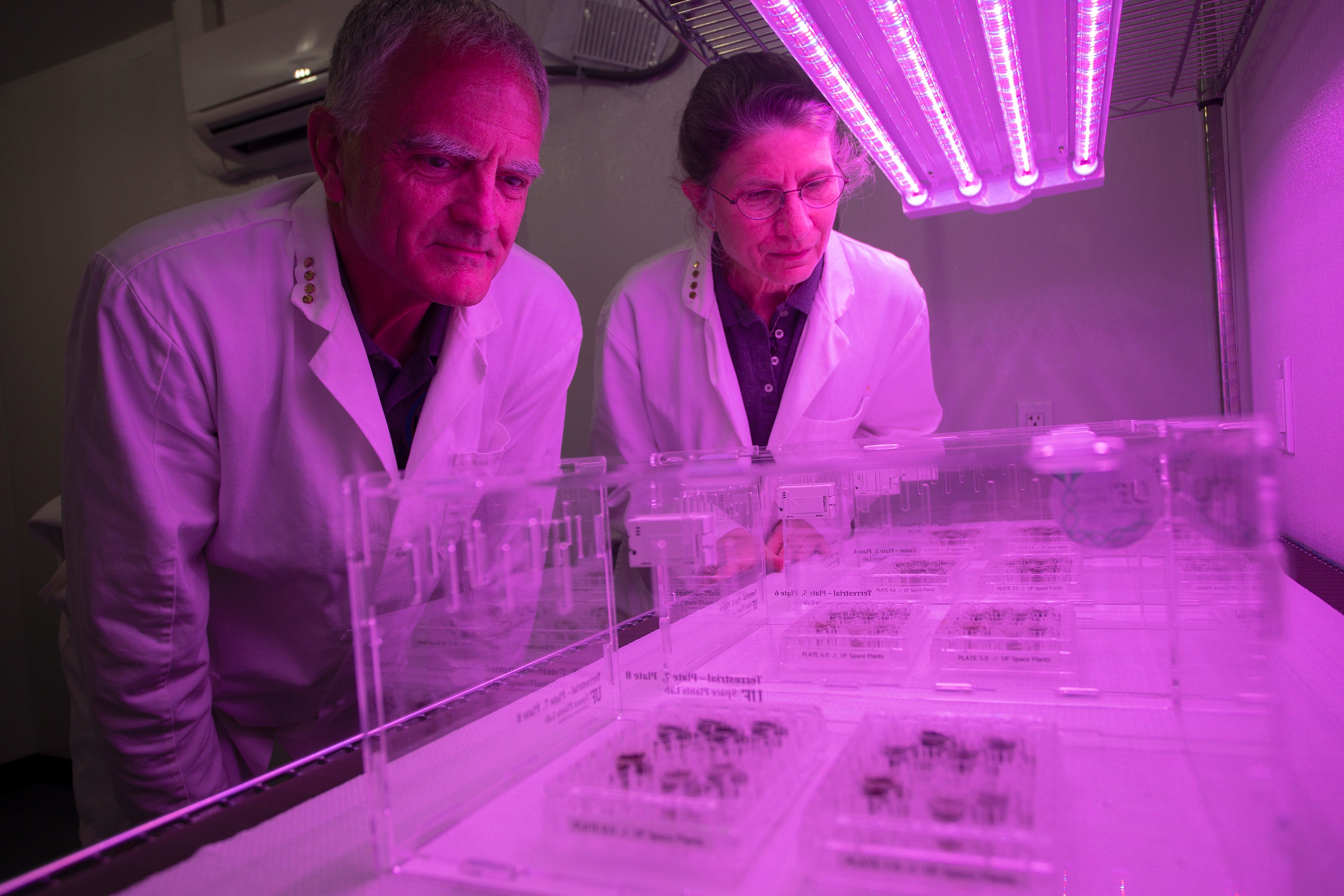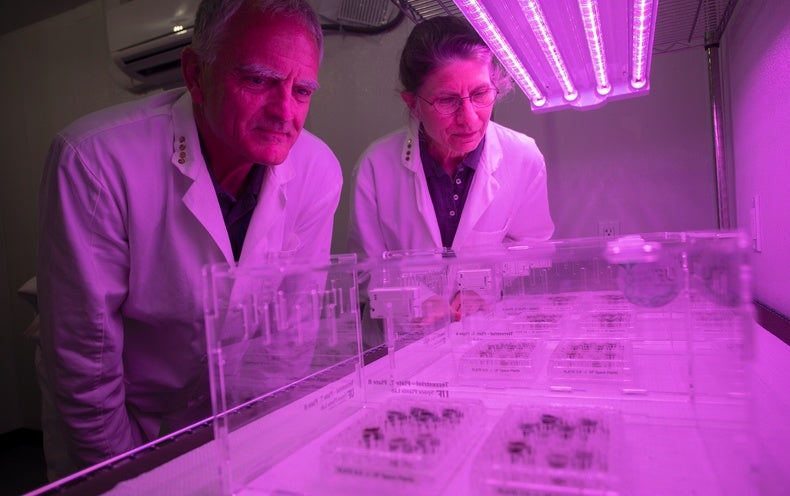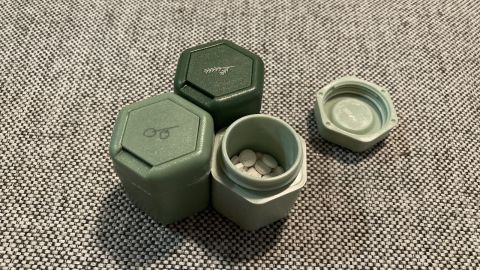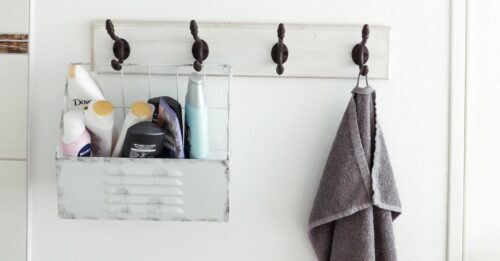
Twelve grams of the moon arrived at Robert Ferl’s laboratory in an undecorated UPS box.
Ferl, a horticulturist at the University of Florida, had waited more than a decade for that moment. The small box of dirt, postmarked from NASA, held some of the last remaining unopened samples of moon dust, or regolith, collected by astronauts on the Apollo 11, 12 and 17 missions. Despite months of practice, Ferl recalls, he lifted the sample with trembling hands. “It’s freaky, scary stuff. I mean, what happens if you drop that?” he says. Ferl and his team were about to become the first researchers to grow plants in actual lunar soil.
The experiment was green-lit as part of a recent boom in lunar research fueled by NASA’s Artemis program, which aims to send humans back to the moon later this decade. This time around, NASA wants to explore the moon more sustainably by creating surface outposts for longer-duration stays, as well as a lunar-orbiting space station called Gateway—both vital dress rehearsals, the space agency says, for eventual astronautical voyages to Mars. Scientists believe that these longer missions will necessitate a sustainable source of food. “All of human exploration has been driven by the ability to keep crews fed,” says Gil Cauthorn, an Osaka, Japan–based researcher at the Astrobotany International Research Initiative.
Ferl’s research, which was published in Communications Biology in May, offers an important first step in that journey, ultimately proving that plants can grow in moon soil. The seedlings failed to truly thrive in regolith alone, however, indicating that future lunar farmers will need to fertilize their soil before planting crops.
In order to test the moon soil, Ferl and his team divvied up the samples into 12 pots of 900 milligrams apiece and planted in each seeds from Arabidopsis thaliana (a hardy relative of mustard and cabbage that is a standard “model organism” in biology). To their delight, all of the seeds successfully germinated. Yet the seedlings had difficulty with the next growth stage: establishing a healthy root system. “That turned out to be fairly problematic,” Ferl says. The Apollo sprouts were slow to grow and showed signs of extreme stress associated with too much salt, metal and soil oxidation. A lot of that has to do with the unearthly conditions under which lunar regolith formed—it was pummeled by solar winds, cosmic rays and meteorite strikes for billions of years. But equally crucial are the ingredients that it is missing—namely, water and microbes.
Microbes are among the most important components of any soil. “They play a huge role,” says Gretchen North, a plant physiological ecologist at Occidental College, who was not involved in the study. Symbiotic bacteria help plants regulate growth hormones, fight off pathogens, minimize environmental stress and absorb critical nutrients such as nitrogen. Lunar regolith lacks a natural microbiome, however. Without this complex biological network, the plants grown in moon dirt struggled to manage nutrient uptake and stress.
Lack of water can also change the consistency of soil for the worse. Regolith, which is strictly nonbiological material, can become extremely dense like cement when water is added. “It’s difficult to get that stuff to not become a rock,” Cauthorn says.
But this doesn’t necessarily mean that lunar regolith can’t be made into a viable soil by adding extra nutrients or composting crops to foster microbe growth. Even taking the soil as is, it’s possible that plants could survive for a generation or two as they got established. “Crop plants are really capable of sort of tightening their belts and getting small,” North says. Still, without proper soil development, “after a while, they probably wouldn’t do the important things that we need crops for.”
Despite such nutritional and microbial obstacles to lunar agriculture, North, who has studied plant growth in simulated Martian conditions, believes the moon offers more fertile ground than the Red Planet’s rusty soil. That’s because Martian regolith is full of perchlorate, an oxidative compound that stunts plants’ growth and can be harmful to humans.
Sooner or later, the ability to grow crops beyond Earth will become vital for living and working in space. Whether in orbital habitats or on long-haul interplanetary voyages, plants could not only be sustainable food sources but also helpful components of a life-support system by virtue of producing oxygen and scrubbing the air of excess carbon dioxide. “Growing plants, it’s all part of learning how to survive and thrive in the space environment that you’re expected to work in,” says Jake Bleacher, chief exploration scientist at NASA’s Human Exploration and Operations Mission Directorate, who was also not involved in Cauthorn’s study. What’s more, methods for farming crops from otherworldly regolith could also be useful for managing agriculture in extremely nutrient- and water-depleted soils right here on Earth.
“Most of us are not going to go to space,” Cauthorn says. “But if we can engineer a way to produce these kinds of crops in such an unforgiving environment—like the lunar surface—we can apply that to meet our food challenges in areas that just can’t grow food anymore.”
In the future, Ferl would like to continue studying how life might take hold in otherwise barren extraterrestrial soils. But for now, he and his fellow researchers are grateful for the opportunity to experiment with one of the only bits of lunar soil on Earth. “For us, it was and continues to be a real privilege,” he says.

























































